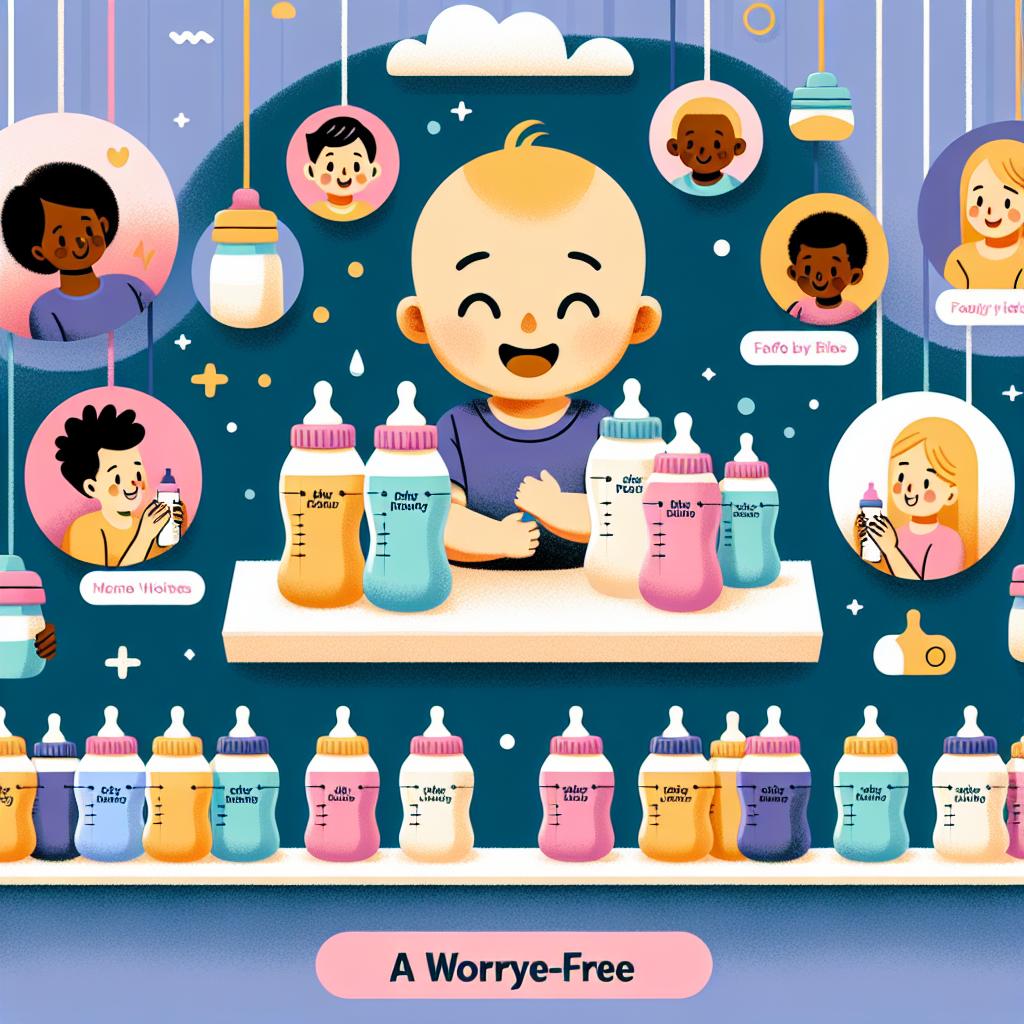Understanding The Importance of Safe Feeding Practices
Raising a child can be an overwhelming experience, particularly for new parents. Among the challenges that parents often face is the quest to ensure secure baby nutrition. With a plethora of feeding bottle options available, the decision to choose the safest feeding tools can be daunting.
Many parents are now leaning towards worry-free feeding bottles to offer a safe feeding experience for their delicate little ones.
The Quest for Worry-Free Feeding Bottles
As the market continues to be inundated with a wide range of baby bottles, it becomes essential to identify the safest options. When talking about worry-free feeding bottles, the factors like material, design, and functionality play a vital role.
– Material: Avoiding certain toxic materials such as BPA, Phthalates, and PVC in feeding bottles is crucial. Opting for bottles made of safe materials like glass, silicon, or eco-friendly plastics can help maintain your baby’s safety.
– Design: A good bottle design mimics the natural process of breastfeeding, making the switch from breast to bottle feeding seamless. This is where biomimetic bottles come into the picture.
– Functionality: Efficiency and ease of use, cleaning, and sterilization processes are key elements to consider when choosing worry-free feeding bottles.
Advantages of Worry-Free Feeding Bottles
The benefits of choosing worry-free feeding bottles expand beyond just providing secure baby nutrition.
– Improved Feeding Experience: Worry-free feeding bottles designed to mimic natural breastfeeding make the entire feeding experience comfortable for your baby. This can reduce fussiness and make mealtime a more enjoyable time for the baby and parents alike.
– Promotes Healthy Growth: The right feeding bottle can contribute significantly towards your baby’s health. Avoiding bottles that contain harmful substances ensures your baby’s internal development remains unhampered.
– Better Sleep Patterns: Many parents have reported improved sleep patterns in their babies after switching to worry-free feeding bottles. This could be due to the comfort that these bottles provide to the baby during feedings.
Choosing The Best Bottles for Your Baby
The decision to choose the best bottle for your baby is not a one-size-fits-all approach. Each baby is unique, and what works for one may not work for another. Therefore, understanding your baby’s needs and carefully selecting the bottle that best caters to those needs can ensure a safe feeding experience. To help in your decision-making process, here’s a useful guide on selecting the best bottles for your baby.
Here is an insightful resource for ensuring a safe and healthy feeding routine for your baby.
Debunking Common Myths About Bottle Feeding
Bottle feeding is sometimes misunderstood, with several myths surrounding it. For instance, a common misconception is that bottle feeding may not be necessary if the mother is still nursing. However, it is important to understand that there can be various reasons why a mother might need to bottle feed her baby, even if she is also breastfeeding.
Learn more about this concept from this discussion on a similar topic in puppies.
Making The Switch to Worry-Free Feeding Bottles
The journey towards making a secure and safe feeding experience for your baby may seem overwhelming, but remember, it is all about taking one step at a time.
Starting With Baby’s First Bottle
As new parents, choosing the right bottle for your baby can be overwhelming. With countless options available, it can be hard to understand where to begin. It is often a good practice to start with bottles that come with newborn-friendly features, such as slow flow nipples that ensure controlled milk flow to prevent choking.
Comfortable grips, easy-to-read scales, leak-proof design, and soothing colors are some other features that can make the first bottle a great choice.
The Importance of Proper Cleaning and Sterilization
Creating a safe feeding routine for your baby goes beyond selecting good quality, worry-free bottles. Ensuring good hygiene is equally, if not more, important. It is essential to clean and sterilize the bottles properly before each use.
After each feeding, first, wash the bottle thoroughly with warm water and mild dish soap to remove milk residues. Make sure to clean the crevices around the nipple and the bottle cap well. Then, sterilize the bottle by boiling it in water for about five minutes to kill bacteria and other pathogens.
If you often find yourself wondering how to clean a baby bottle properly, here is a great resource that provides step-by-step guidance even though it pertains to water bottles, the steps are similar for baby bottles.
The Role of Proper Drying
After sterilizing, allowing the bottle to dry properly is important to prevent the growth of mold and other bacteria. Some parents worry if the bottles need to be completely dry before using them for feeding. To answer this, it is indeed crucial to let the bottles dry completely.
Using a clean, dry rack to let the bottle parts air dry is a good practice. Avoid using a dishtowel to dry the bottle parts as it can introduce bacteria. Here’s an interesting discussion on parenting.stackexchange.com about when is the right time to use the bottles after cleaning them.
Detecting and Removing Damaged Bottles
Using bottles that have cracks, chips, or broken parts can harm your baby. Always inspect the bottles for any visible damages before filling them with milk. If any parts are broken, replace the damaged parts or switch to a new bottle immediately.
It might be alarming to find a safety seal on a newly purchased feeding bottle already perforated. You should consider such bottles unsafe and return them to the store or the manufacturer. Here’s a conversation where people share their experiences about receiving similar products.
Conclusion
With correct knowledge and persistent effort, you can assure a worry-free feeding experience for your baby. Understanding the factors that contribute to such an experience, debunking common myths, and following safe feeding practices are the key steps towards achieving this.
Always remember that your baby’s safety and well-being should be your top priority.

